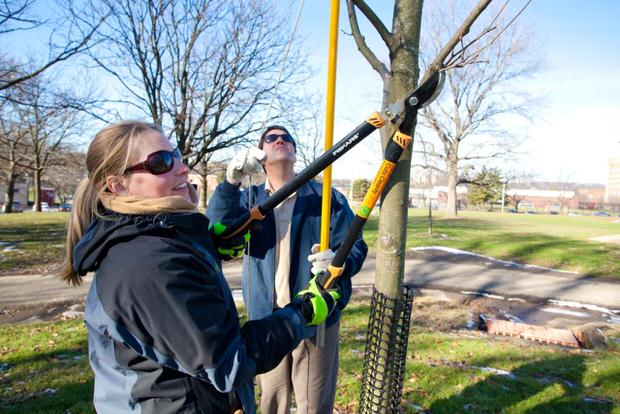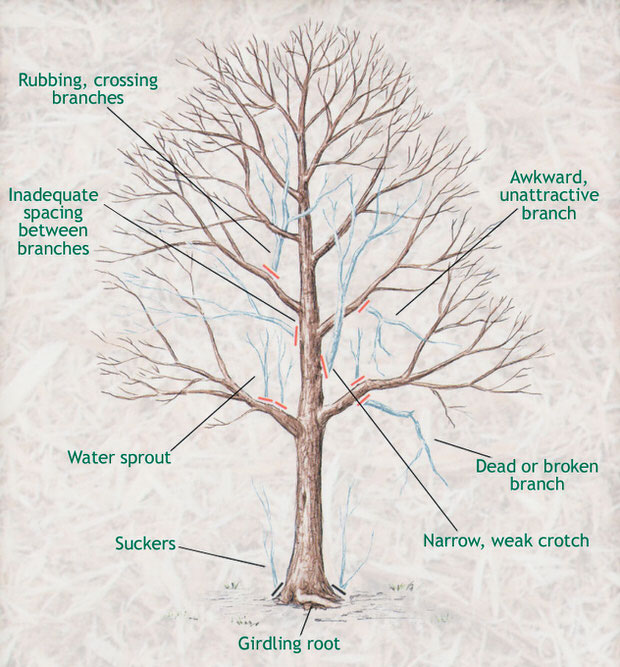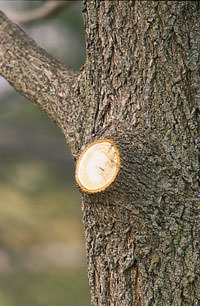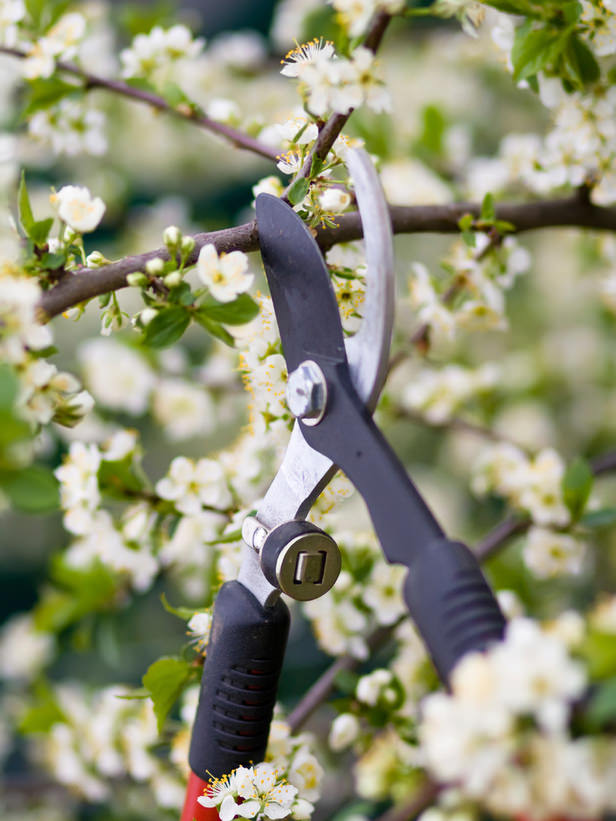






I wanted to touch base about pruning trees at this time of year, because as soon as the holidays are over, many of you do exactly that. And if you have run across any of the “guides” on pruning trees written by the extension programs of state universities, you may have had your head spin around. Here are all the simple guidelines on how, and when to prune your trees.
When to Prune Trees
For all of you who pull out the clippers and loppers right after Christmas, don’t! Most trees will come out healthier on the other end if you wait until after the coldest part of winter has passed, but before vigorous growth starts in early spring. For most people that’s February to March. That having been said, it’s ok to do minor pruning to weed out dead branches, etc… at any time of year. Note: it is okay to still prune fruit trees if they have started to flower. In fact, fruit trees tend to get some winter kill of branches, and waiting for the first flowers will help you determine which branches are dead and need to be removed.
How to Prune Large Trees
Short answer? Don’t. Large trees need an arborist or tree trimming service for both safety and health of the tree. Fortunately, large trees rarely need to be pruned yearly!
How to Prune Small Trees
You prune decorative garden trees for two reasons… First, is to improve the health of the tree. Pruning creates more compact and healthy growth, and opens up the crown for good air circulation. Second, to improve the appearance of the tree. Every time you make a cut in your tree, first think about which one of those objectives you are trying to achieve… if your cut fits with one of those two, it’s a good cut.

Note: Make sure your pruners and loppers are sharp and clean. You don’t want to invite fungus or disease.
To prune a small tree for health, first you want to remove any dead or unhealthy branches. Make your cuts just outside the collar of the branch…don’t cut too close to the trunk, and on the other side, don’t leave a stub. Below is an example of a proper cut. If branches cross over or are too thick, prune them out to allow the branches you leave room to grow and flourish. Most people are not aggressive enough in thinning out branches.

Now prune for shape and size. Step back and look at your tree, and know what it’s natural shape should be. For instance, is it a weeping tree, or a graceful vase shape? Make sure you remove branches that are interfering with the shape you want your tree to take. Step back after every cut and re-evaluate. Try to remove most of your branches at the trunk, but if you need to shorten a branch, don’t cut it in the middle… make your cut a quarter inch above a bud.
How to Prune Fruit Trees

Pruning fruit trees is slightly different in that the main purpose is to encourage stronger growth of the fruit itself, not size of the tree. This involves creating a more compact tree and only leaving the strongest branches, which results in large and more flavorful fruit.
According to Dr. Lee Reich, author of “Landscaping with Fruits”, “You need to make thinning cuts and heading cuts—to keep the center of the tree open and to stimulate new growth for the following year. And in general you need to cut more than you probably think you should.”
Also suggested by Dr. Reich is a good visual tool for deciding whether you have thinned your fruit trees far enough…another place most people are not aggressive enough. He calls it his “cat tossing method”. Yes, I find this disturbing, but it’s a good visual… He says if when you are finished pruning, you could toss a cat through the branches, you’ve done enough. Not the analogy I would use, and I’m torn between laughing at the craziness of it, and feeling really disturbed. But there you are, one of the leading authorities on pruning. How about this, he offers an alternative for those of us a bit sensitive… If a large bird can fly through the branches, you are good. Why didn’t you just say that in the first place, Dr. Reich? :) His basic rule for thinning fruit on apple and peach trees is that for every 20 blossoms, only one should remain. Yep, that aggressive.
So prune your trees at the right time, with the right technique. It will improve their curb appeal, their flowering and fruiting, and their health. It’s not hard, just take it one cut at a time!
Copyright © www.100flowers.win Botanic Garden All Rights Reserved